Abstract
AIMS: To present experimental evidence in support of a proposed common cause for absorptive hypercalciuria, renal hypercalciuria, renal phosphate leak and enhancement of 1,25-(OH)2-vitamin D concentrations in patients presenting with renal stone disease; and to suggest further investigation with a view to new management. METHODS: An oral calcium loading test was administered to 15 patients with renal stones and 10 normal controls in the fasting state: urine and blood were collected hourly. After the second urine sample, 400 mg calcium dissolved in water was administered orally. Serum calcium, albumin, parathyroid hormone (PTH), and phosphate were measured together with urine calcium clearance and urinary phosphate from which the TmPO4/glomerular filtration rate (GFR) ratio was calculated. Serum 1,25-(OH)2-vitamin D was measured in the first serum sample. In addition, 24 hour urine calcium results were collected retrospectively from the patients' case notes over the previous 18 months. RESULTS: In the basal state, renal stone patients had an overall greater phosphaturia (lower TmPO4/GFR: median 1.72 compared with 2.10 in controls) and increased calcium clearance. Serum corrected calcium and PTH concentrations did not differ between the groups. After calcium loading, serum calcium and urine calcium clearance rose in both groups, with patients with renal stones experiencing a greater percentage fall in phosphaturia. In both groups TmPO4/GFR fell (greater phosphaturia) with increased serum corrected calcium, with the patients showing notably greater phosphaturia for any given calcium concentration. Patients also had notably greater phosphaturia compared with the serum calcium concentration for any given PTH value. Serum 1,25-(OH)2-vitamin D was higher in patients than controls and for any 1,25-(OH)2-vitamin D concentration phosphaturia measured against serum calcium was greater in patients than controls. 1,25-(OH)2-vitamin D did not correlate with phosphaturia relative to serum calcium concentrations within the patient and control groups. CONCLUSIONS: It is proposed that patients with idiopathic hypercalciuria have an "inappropriately' high phosphate excretion for any given serum calcium concentration. Loss of phosphate may induce increased activation of 1,25-(OH)2-vitamin D. Some of the commonly described causes of stone formation may be manifestations of a single mechanism.
Full text
PDF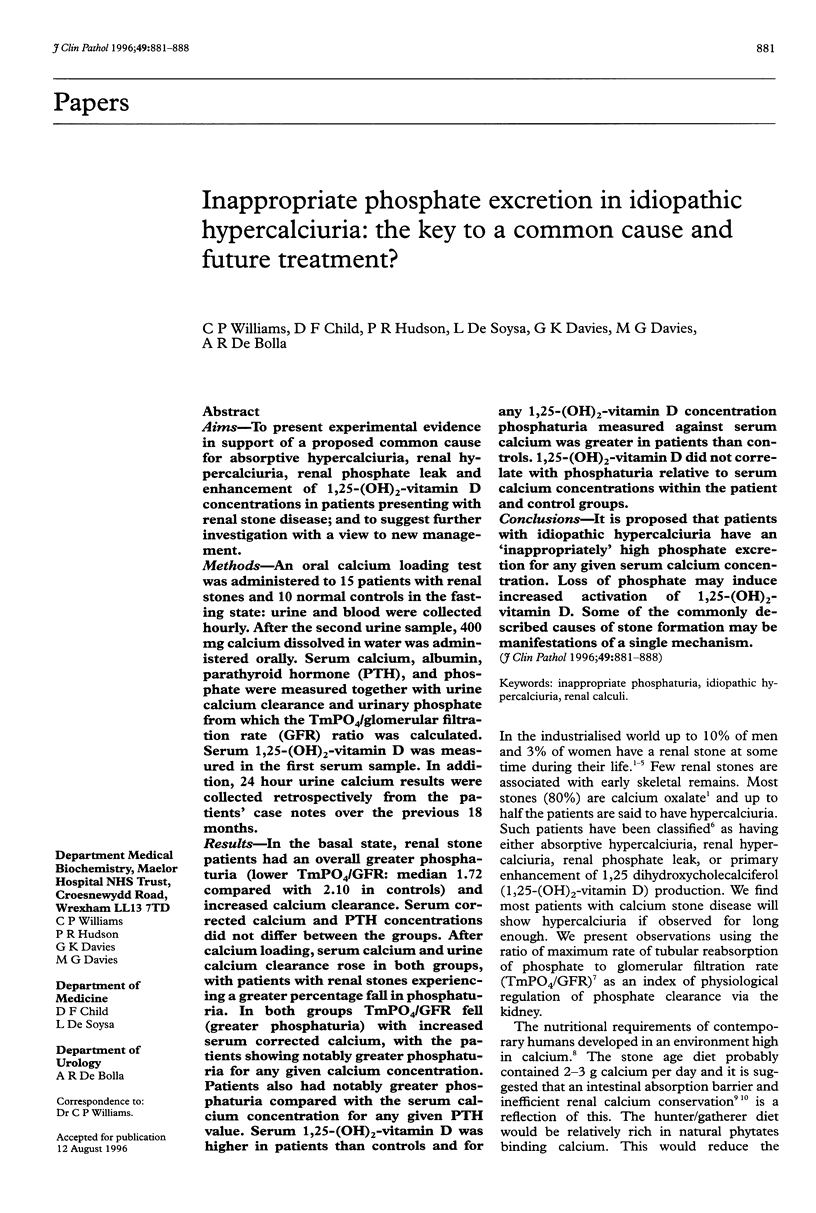
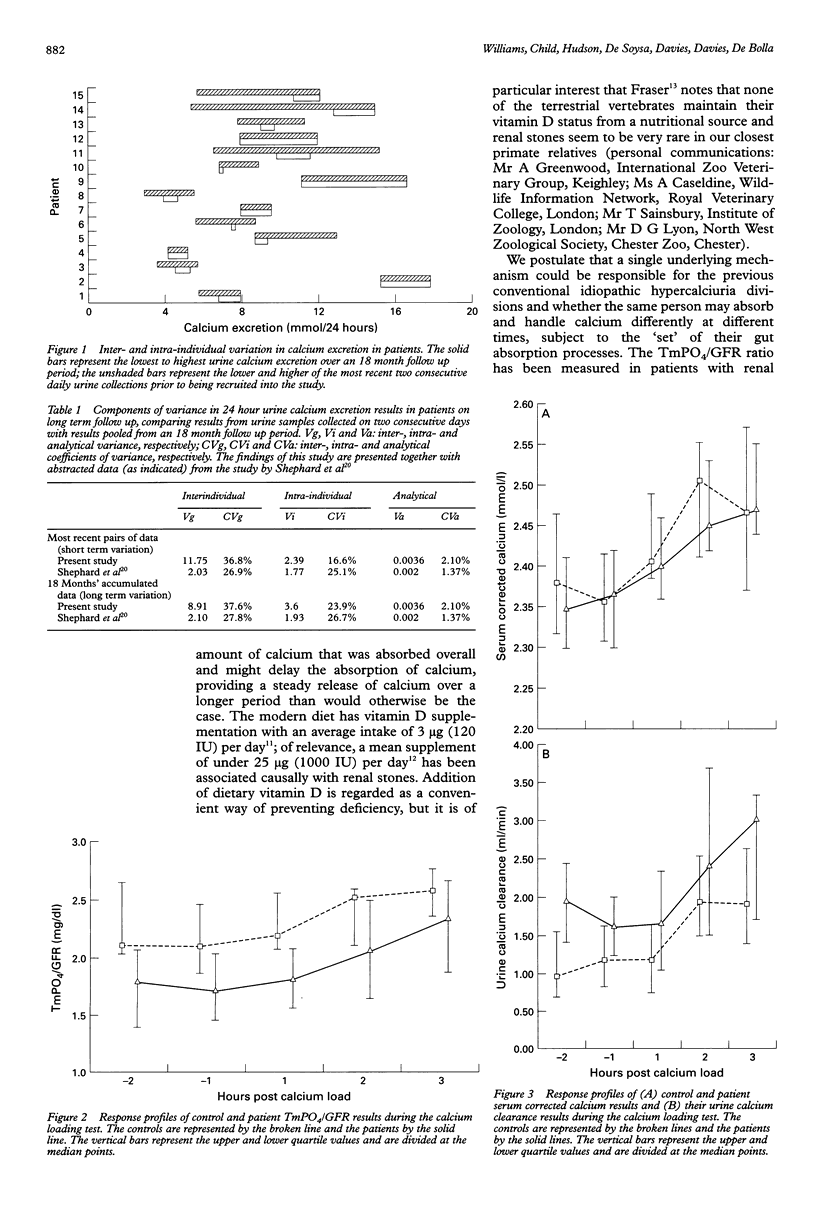
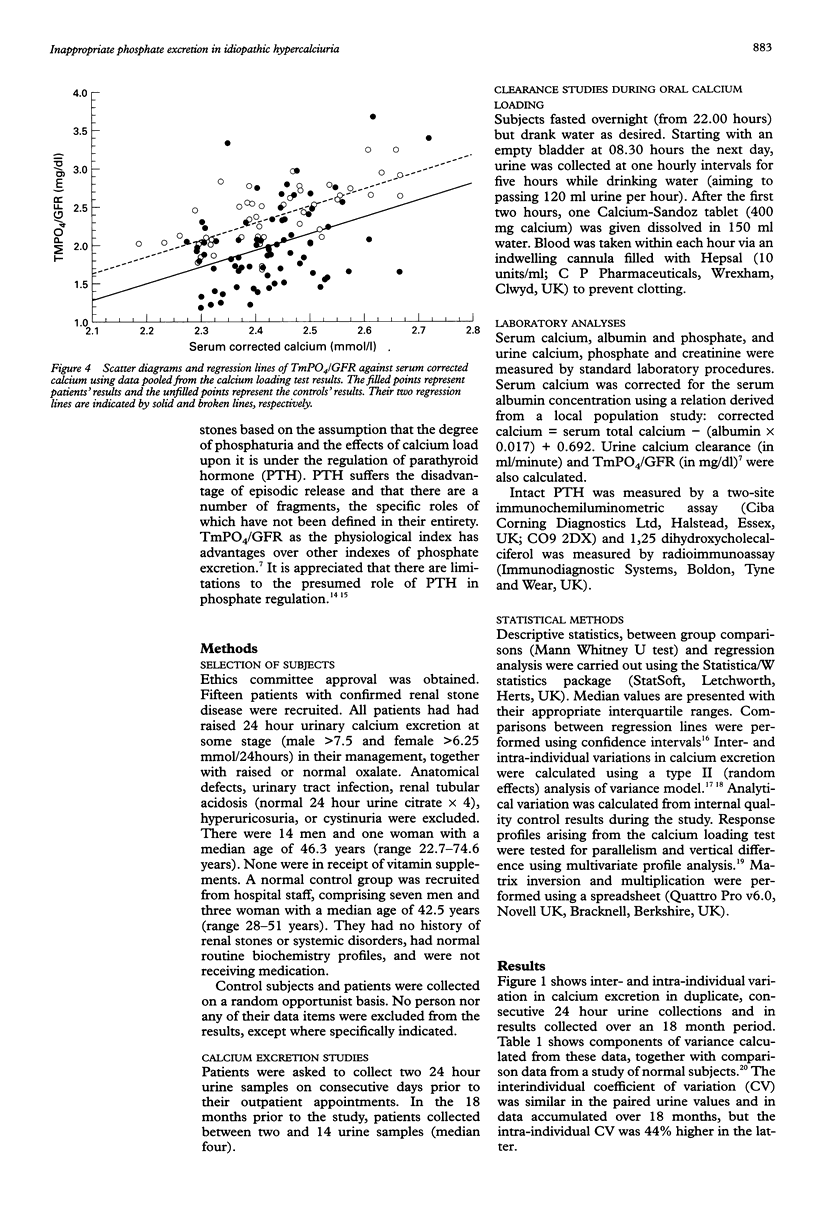
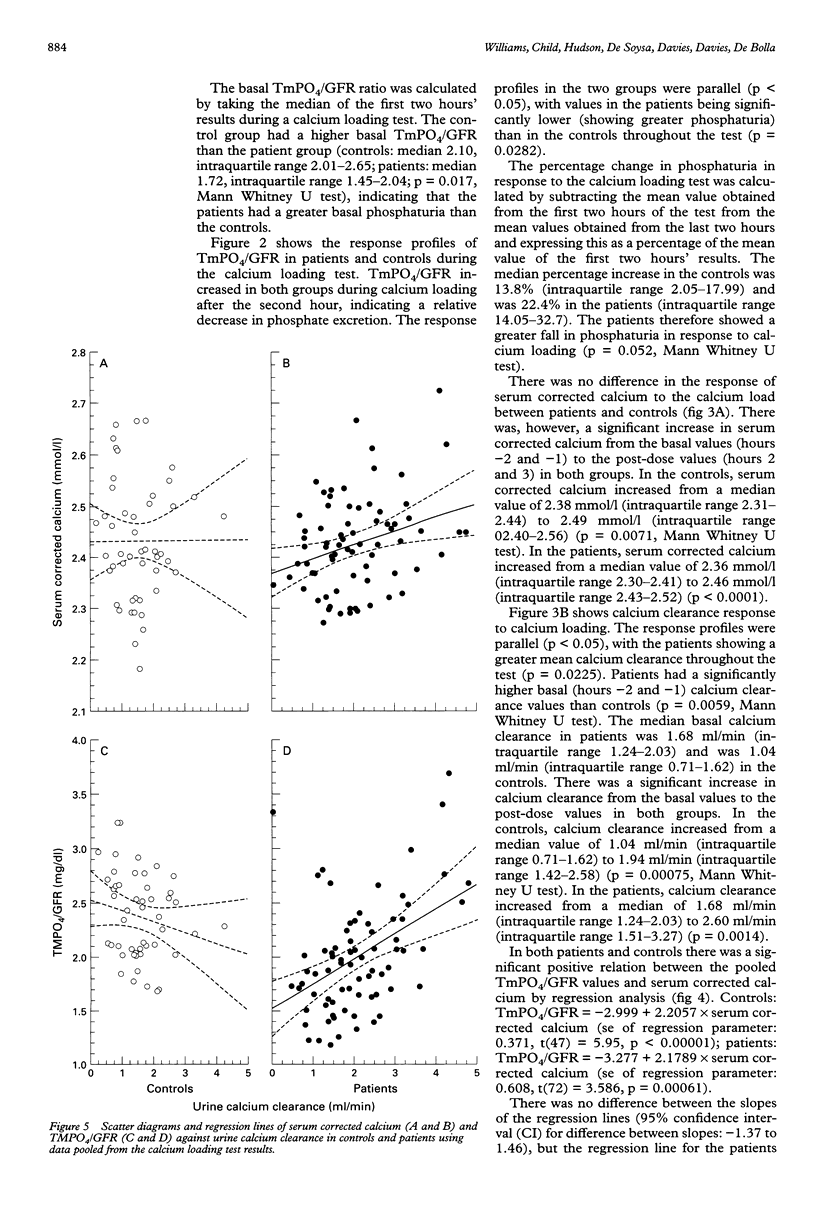
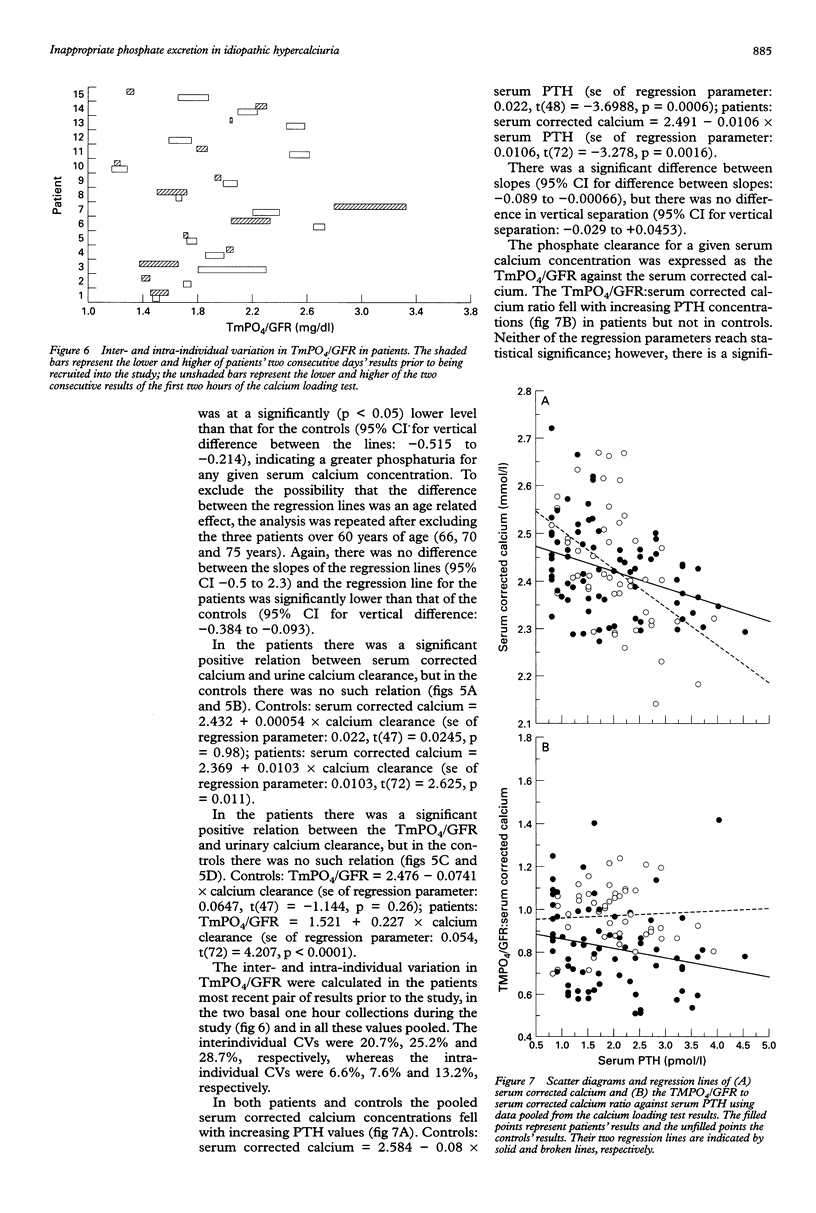
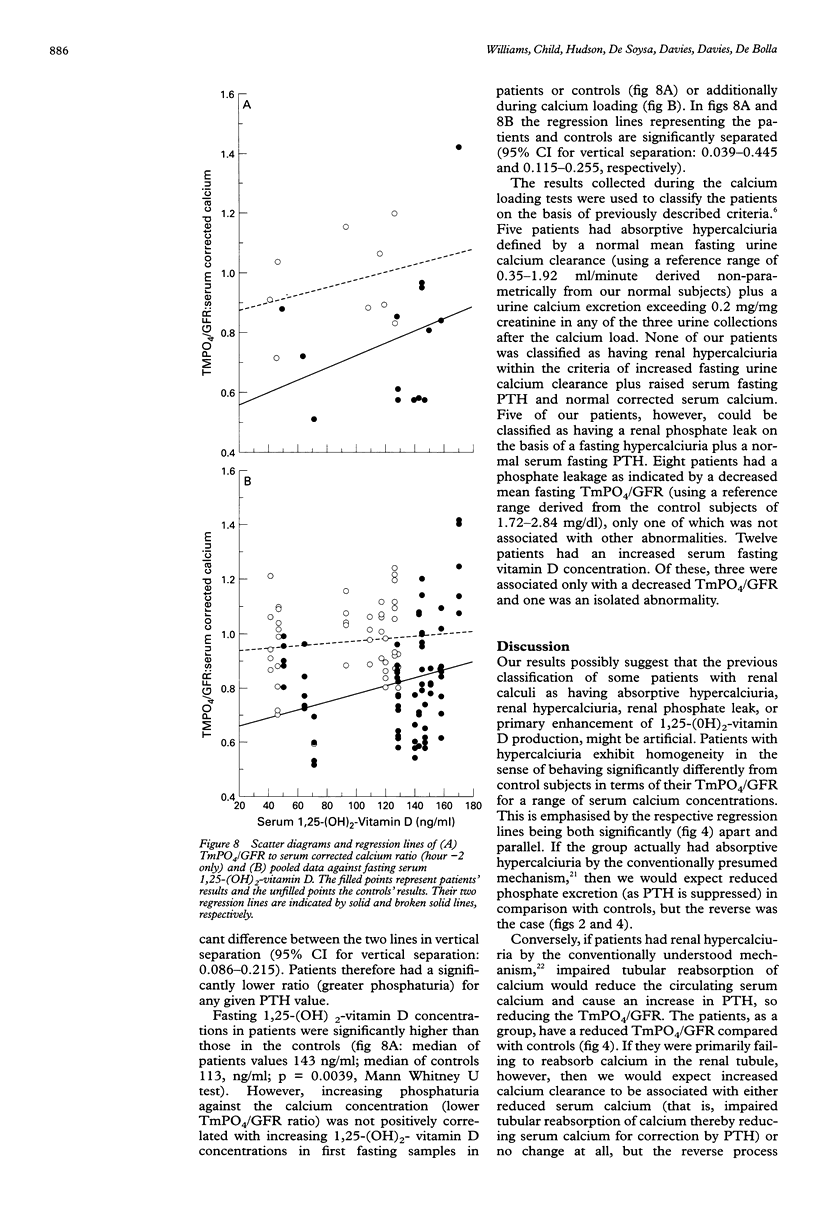
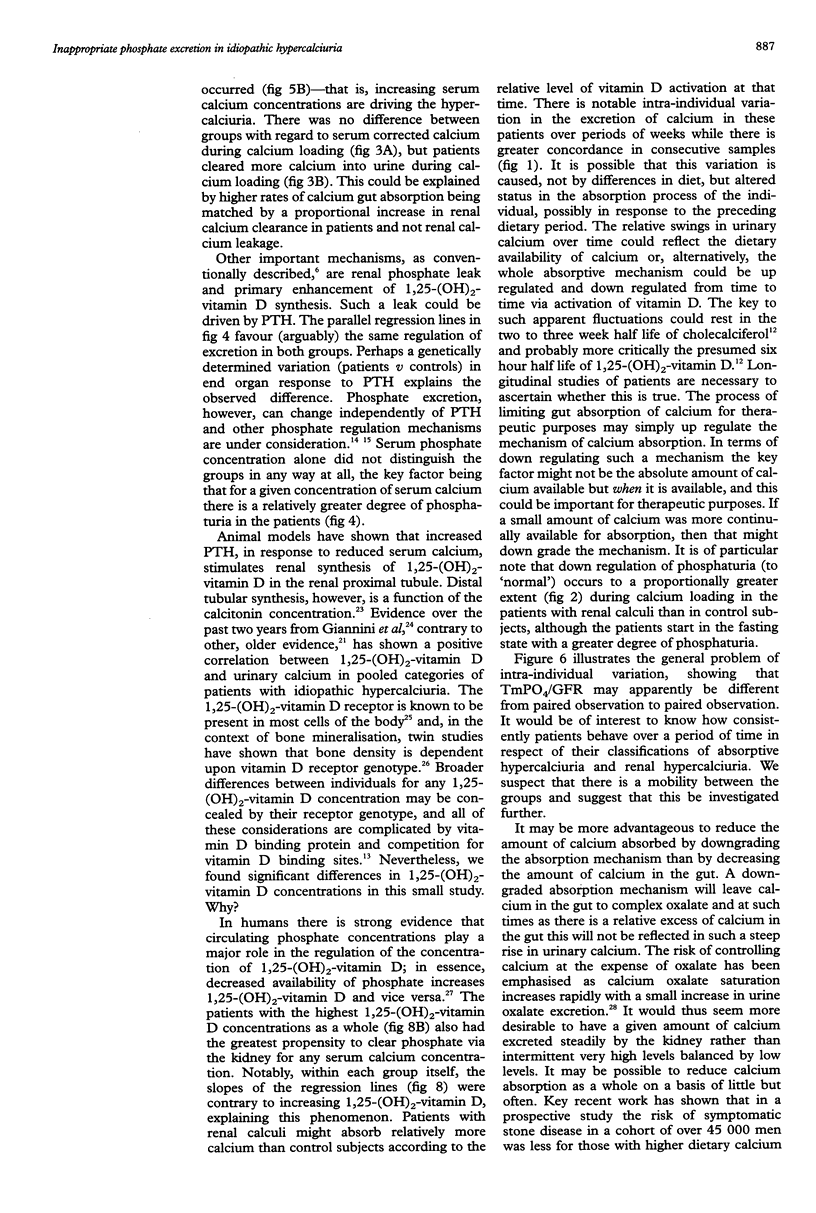
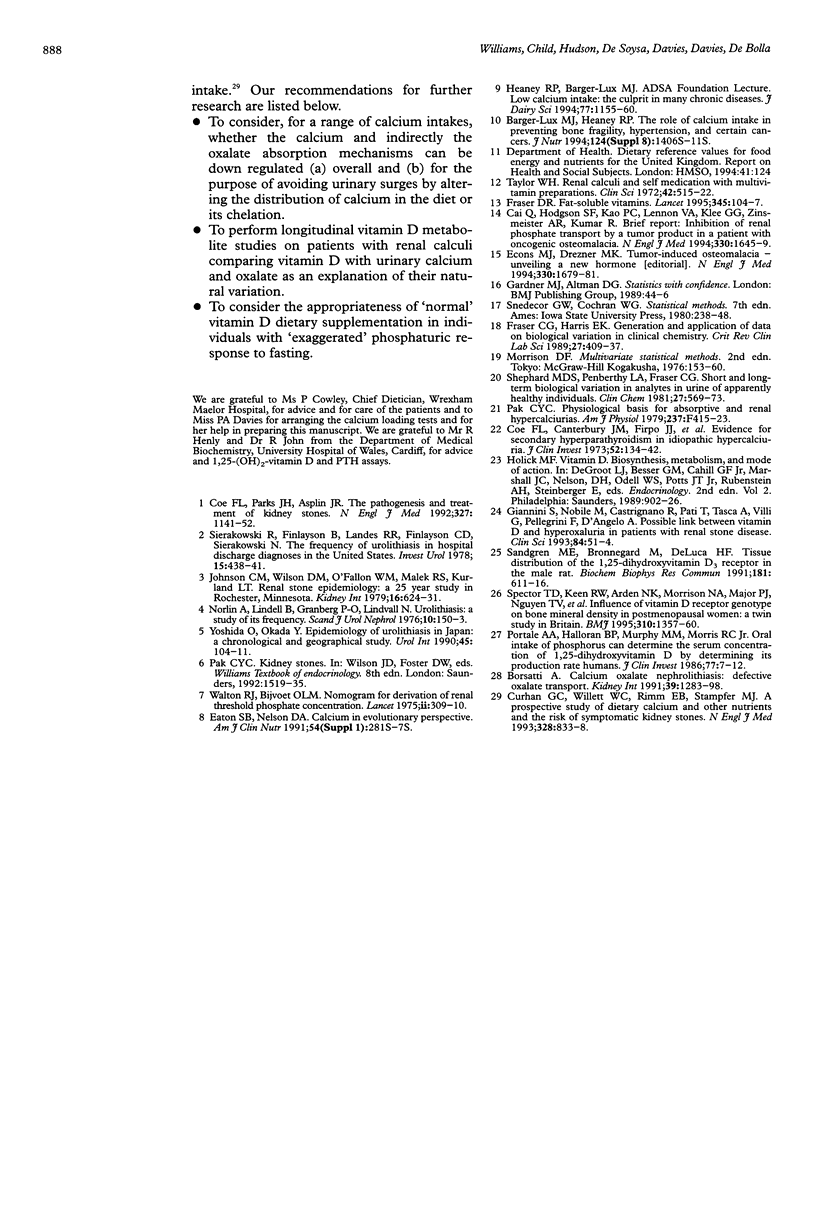
Selected References
These references are in PubMed. This may not be the complete list of references from this article.
- Barger-Lux M. J., Heaney R. P. The role of calcium intake in preventing bone fragility, hypertension, and certain cancers. J Nutr. 1994 Aug;124(8 Suppl):1406S–1411S. doi: 10.1093/jn/124.suppl_8.1406S. [DOI] [PubMed] [Google Scholar]
- Borsatti A. Calcium oxalate nephrolithiasis: defective oxalate transport. Kidney Int. 1991 Jun;39(6):1283–1298. doi: 10.1038/ki.1991.162. [DOI] [PubMed] [Google Scholar]
- Cai Q., Hodgson S. F., Kao P. C., Lennon V. A., Klee G. G., Zinsmiester A. R., Kumar R. Brief report: inhibition of renal phosphate transport by a tumor product in a patient with oncogenic osteomalacia. N Engl J Med. 1994 Jun 9;330(23):1645–1649. doi: 10.1056/NEJM199406093302304. [DOI] [PubMed] [Google Scholar]
- Coe F. L., Canterbury J. M., Firpo J. J., Reiss E. Evidence for secondary hyperparathyroidism in idiopathic hypercalciuria. J Clin Invest. 1973 Jan;52(1):134–142. doi: 10.1172/JCI107156. [DOI] [PMC free article] [PubMed] [Google Scholar]
- Coe F. L., Parks J. H., Asplin J. R. The pathogenesis and treatment of kidney stones. N Engl J Med. 1992 Oct 15;327(16):1141–1152. doi: 10.1056/NEJM199210153271607. [DOI] [PubMed] [Google Scholar]
- Curhan G. C., Willett W. C., Rimm E. B., Stampfer M. J. A prospective study of dietary calcium and other nutrients and the risk of symptomatic kidney stones. N Engl J Med. 1993 Mar 25;328(12):833–838. doi: 10.1056/NEJM199303253281203. [DOI] [PubMed] [Google Scholar]
- Econs M. J., Drezner M. K. Tumor-induced osteomalacia--unveiling a new hormone. N Engl J Med. 1994 Jun 9;330(23):1679–1681. doi: 10.1056/NEJM199406093302310. [DOI] [PubMed] [Google Scholar]
- Fraser C. G., Harris E. K. Generation and application of data on biological variation in clinical chemistry. Crit Rev Clin Lab Sci. 1989;27(5):409–437. doi: 10.3109/10408368909106595. [DOI] [PubMed] [Google Scholar]
- Fraser D. R. Vitamin D. Lancet. 1995 Jan 14;345(8942):104–107. doi: 10.1016/s0140-6736(95)90067-5. [DOI] [PubMed] [Google Scholar]
- Giannini S., Nobile M., Castrignano R., Pati T., Tasca A., Villi G., Pellegrini F., D'Angelo A. Possible link between vitamin D and hyperoxaluria in patients with renal stone disease. Clin Sci (Lond) 1993 Jan;84(1):51–54. doi: 10.1042/cs0840051. [DOI] [PubMed] [Google Scholar]
- Heaney R. P., Barger-Lux M. J. ADSA Foundation Lecture. Low calcium intake: the culprit in many chronic diseases. J Dairy Sci. 1994 May;77(5):1155–1160. doi: 10.3168/jds.s0022-0302(94)77052-1. [DOI] [PubMed] [Google Scholar]
- Johnson C. M., Wilson D. M., O'Fallon W. M., Malek R. S., Kurland L. T. Renal stone epidemiology: a 25-year study in Rochester, Minnesota. Kidney Int. 1979 Nov;16(5):624–631. doi: 10.1038/ki.1979.173. [DOI] [PubMed] [Google Scholar]
- Norlin A., Lindell B., Granberg P. O., Lindvall N. Urolithiasis. A study of its frequency. Scand J Urol Nephrol. 1976;10(2):150–153. doi: 10.3109/00365597609179677. [DOI] [PubMed] [Google Scholar]
- Pak C. Y. Physiological basis for absorptive and renal hypercalciurias. Am J Physiol. 1979 Dec;237(6):F415–F423. doi: 10.1152/ajprenal.1979.237.6.F415. [DOI] [PubMed] [Google Scholar]
- Portale A. A., Halloran B. P., Murphy M. M., Morris R. C., Jr Oral intake of phosphorus can determine the serum concentration of 1,25-dihydroxyvitamin D by determining its production rate in humans. J Clin Invest. 1986 Jan;77(1):7–12. doi: 10.1172/JCI112304. [DOI] [PMC free article] [PubMed] [Google Scholar]
- Sandgren M. E., Brönnegärd M., DeLuca H. F. Tissue distribution of the 1,25-dihydroxyvitamin D3 receptor in the male rat. Biochem Biophys Res Commun. 1991 Dec 16;181(2):611–616. doi: 10.1016/0006-291x(91)91234-4. [DOI] [PubMed] [Google Scholar]
- Shephard M. D., Penberthy L. A., Fraser C. G. Short- and long-term biological variation in analytes in urine of apparently healthy individuals. Clin Chem. 1981 Apr;27(4):569–573. [PubMed] [Google Scholar]
- Sierakowski R., Finlayson B., Landes R. R., Finlayson C. D., Sierakowski N. The frequency of urolithiasis in hospital discharge diagnoses in the United States. Invest Urol. 1978 May;15(6):438–441. [PubMed] [Google Scholar]
- Spector T. D., Keen R. W., Arden N. K., Morrison N. A., Major P. J., Nguyen T. V., Kelly P. J., Baker J. R., Sambrook P. N., Lanchbury J. S. Influence of vitamin D receptor genotype on bone mineral density in postmenopausal women: a twin study in Britain. BMJ. 1995 May 27;310(6991):1357–1360. doi: 10.1136/bmj.310.6991.1357. [DOI] [PMC free article] [PubMed] [Google Scholar]
- Taylor W. H. Renal calculi and self-medication with multivitamin preparations containing vitamin D. Clin Sci. 1972 Apr;42(4):515–522. doi: 10.1042/cs0420515. [DOI] [PubMed] [Google Scholar]
- Walton R. J., Bijvoet O. L. Nomogram for derivation of renal threshold phosphate concentration. Lancet. 1975 Aug 16;2(7929):309–310. doi: 10.1016/s0140-6736(75)92736-1. [DOI] [PubMed] [Google Scholar]
- Yoshida O., Okada Y. Epidemiology of urolithiasis in Japan: a chronological and geographical study. Urol Int. 1990;45(2):104–111. doi: 10.1159/000281680. [DOI] [PubMed] [Google Scholar]


